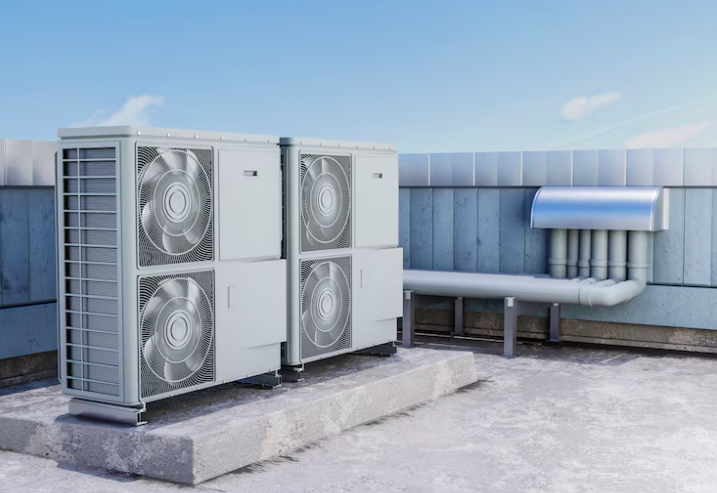Heating, Ventilation, and Air Conditioning (HVAC) systems are essential for comfort in homes and commercial buildings. But did you know that automating your HVAC system can save energy, reduce costs, and improve indoor air quality?
In this blog, we’ll break down what HVAC automation is, how it works, and why it's a game-changer for residential and commercial spaces. Whether you're a homeowner, facility manager, or business owner, this guide will help you understand the benefits of smart climate control.
What Is HVAC Automation?
HVAC automation is the use of smart technology to control heating, cooling, and ventilation systems. Instead of adjusting thermostats manually, automation allows systems to respond to data from sensors, weather updates, occupancy patterns, and more.
Key Features of HVAC Automation:
-
Smart thermostats
-
Programmable schedules
-
Motion and occupancy sensors
-
Remote monitoring and control
-
Integration with Building Management Systems (BMS)
These systems work together to maintain optimal temperatures while reducing energy waste.
Benefits of HVAC Automation
Implementing HVAC automation comes with several advantages for both homeowners and commercial property managers.
1. Energy Efficiency
Automated systems reduce heating and cooling when spaces are unoccupied. This can lead to energy savings of 20% or more.
2. Cost Savings
Lower energy usage means lower utility bills. Over time, automation systems can pay for themselves.
3. Improved Comfort
Automation ensures consistent indoor temperatures. Systems can adapt in real time to changing conditions.
4. Remote Access and Control
Using smartphones or computers, users can monitor and adjust HVAC systems from anywhere.
5. Maintenance Alerts
Smart systems can detect issues early, sending alerts before small problems turn into expensive repairs.
6. Better Air Quality
Automated ventilation ensures fresh air cycles throughout the day, which is especially useful in airtight buildings.
How HVAC Automation Works
Sensors and Data Collection
Sensors measure temperature, humidity, occupancy, and CO2 levels. This data drives system responses.
Smart Controllers and Thermostats
These devices interpret sensor data and adjust HVAC equipment accordingly.
Connectivity and Integration
HVAC systems can connect with other smart home or building devices through Wi-Fi or proprietary networks.
AI and Machine Learning
Some advanced systems use AI to learn usage patterns and predict future needs, improving efficiency over time.
Residential vs. Commercial HVAC Automation
Residential HVAC Automation
Homeowners can use smart thermostats like Nest or Ecobee. These devices offer features like voice control, geofencing, and adaptive schedules.
Commercial HVAC Automation
Commercial systems are more complex. They often integrate with Building Management Systems and require custom programming. Benefits include energy reporting, zone control, and peak demand management.
Choosing the Right HVAC Automation System
When selecting a system, consider your building's size, existing HVAC setup, and budget.
Tips for Choosing:
-
Look for Energy Star-certified products
-
Ensure compatibility with existing HVAC systems
-
Prioritize user-friendly interfaces
-
Consider future scalability
Work with a certified HVAC technician or integrator to ensure proper installation and setup.
Top HVAC Automation Technologies and Brands
Popular Products:
-
Nest Learning Thermostat
-
Ecobee SmartThermostat
-
Honeywell T10 Pro
-
Schneider Electric BMS Solutions
-
Johnson Controls Metasys
Features to Look For:
-
Voice assistant integration (Alexa, Google Assistant)
-
App-based remote control
-
Energy usage reports
-
Zoning capabilities
Trends in HVAC Automation
IoT Integration
The Internet of Things connects HVAC systems with other smart devices, enabling more responsive environments.
AI-Driven Optimization
AI helps systems learn from user behavior and environmental changes, maximizing comfort and efficiency.
Demand Response Programs
Utilities offer incentives for reducing HVAC usage during peak times, which automation can manage automatically.
Sustainability and Green Building
HVAC automation supports LEED certification and other sustainability goals.
Case Study: Smart HVAC in a Mid-Sized Office Building
A 5-story office building implemented a smart HVAC solution with occupancy sensors, zoned thermostats, and a BMS. The result:
-
25% reduction in energy bills
-
Improved employee comfort
-
Real-time system monitoring
This case proves how HVAC automation can deliver both financial and operational benefits.
FAQs About HVAC Automation
What is HVAC automation?
It’s the use of smart technology to control heating, cooling, and ventilation systems automatically based on real-time data.
How much does HVAC automation cost?
Costs vary widely. A smart thermostat may cost $200-$400, while full BMS solutions can cost tens of thousands.
Can I automate an existing HVAC system?
Yes. Many systems can be retrofitted with smart thermostats and controllers.
Is HVAC automation worth it?
For most users, the energy savings and increased comfort quickly outweigh the upfront cost.
Do I need internet for HVAC automation?
Some basic functions work offline, but full features like remote access require internet connectivity.
Take Control of Your Climate Today
HVAC automation is no longer a luxury—it’s a smart investment in comfort, energy efficiency, and long-term cost savings. Whether you manage a large facility or a single-family home, there's a solution that fits your needs.
Ready to upgrade your HVAC system?
Contact us today to find the right automation solution for your space and start experiencing the benefits of intelligent climate control.
